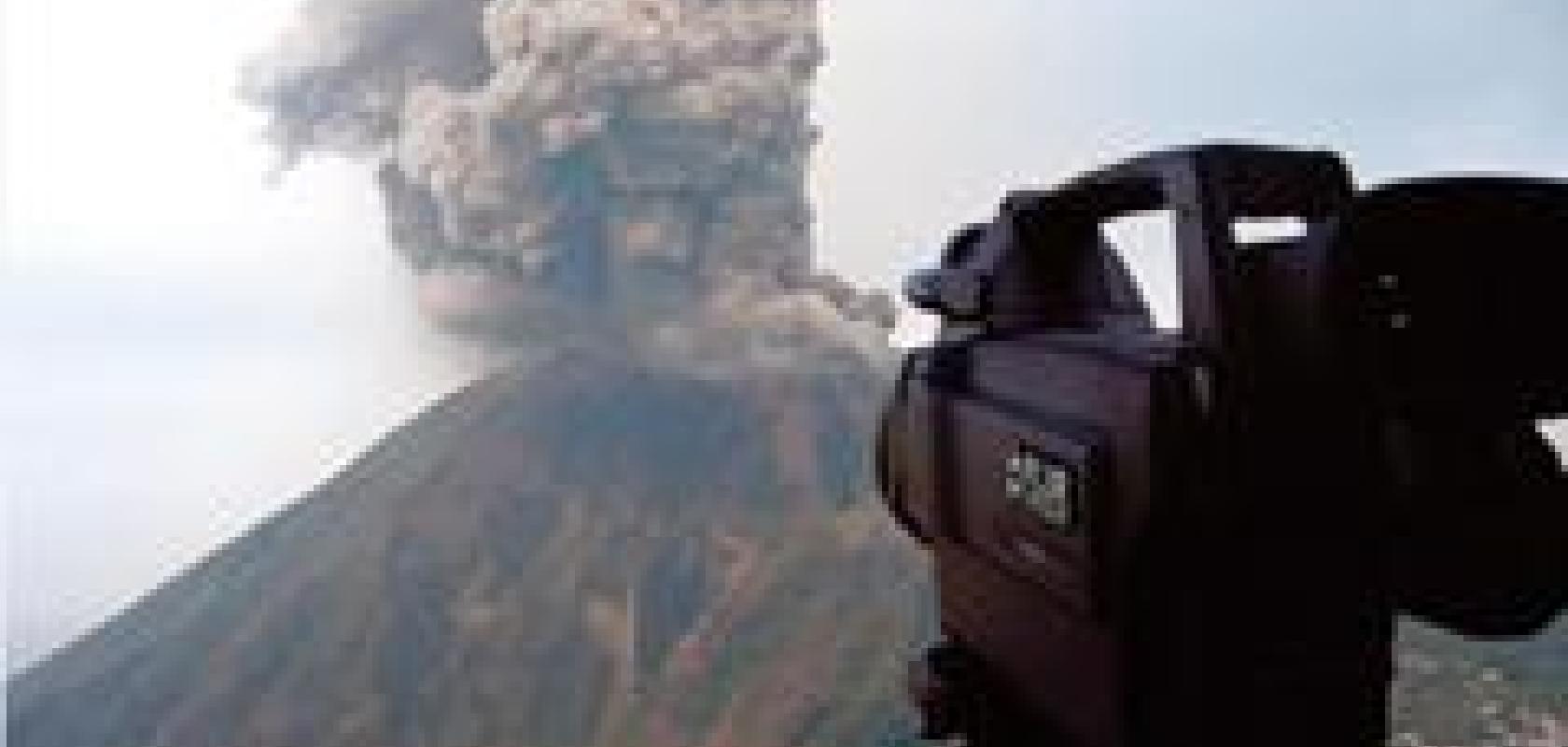Volcano research enhanced with FLIR thermal imaging cameras.

Volcanoes are arguably the world's most impressive heat related phenomena. Volcanic processes are intriguing and potentially extremely destructive. It is therefore no wonder that researchers all over the world are studying the different aspects of volcanoes and volcanic activity.
According to researchers that have worked with thermal imaging cameras from FLIR System this equipment is the best tool available for volcano monitoring. Thermal imaging cameras allow researchers to not only see volcanic heat, but also to get non contact temperature readings from a safe distance, which keeps the researchers out of harm's way.
Thermal imaging cameras record radiated heat, quantify that reading into a temperature measurement and visualize the measured temperatures in a thermal image. According to volcano researchers thermal imaging cameras are the ideal tool for the detection and analysis of volcanic heat patterns.
One camera that is often used for volcano research is the FLIR SC660 thermal imaging camera. This handheld thermal imaging camera can be used from ground level or from a helicopter. The fact that it has interchangeable lenses is extremely useful for volcano research. The standard 24° angle lens is very good for short range observations and the 7° angle lens is essential for long distance observations. This type of camera is ideal for researchers that investigate multiple volcanoes, constantly travelling to and fro.
Another camera that is used for volcano research is the FLIR SC655 thermal imaging camera. These fixed mounted thermal imaging cameras are ideal for 24/7 volcano observation. Advanced analytics software also allows researchers to set up automatic alarms. The thermal data are compared to previously determined parameters and if the recorded temperature rises above a certain threshold than an alarm will go off. This type of camera is the best option for volcano monitoring centers that are dedicated to one or more volcanoes in a single location.
Improve warning systems
Not only can thermal imaging cameras be used to measure and map active lava flows and to detect new cracks where hot gases escape, extensive analysis of the surface temperature can bring the researchers a step closer to understanding the mechanics behind the most impressive and most destructive of geological phenomena. Understanding the mechanics behind volcanic incidents will help to improve volcanic warning systems which will in turn help to save lives.
Although predicting volcanic activity is becoming more reliable, many volcanic phenomena are still highly unpredictable. One of these phenomena is called fumarolic activity. Pressurized fluids, mostly water and CO2, heat up due to volcanic warmth. The temperature of these pressurized fluids can rise to several hundreds degrees Celsius, but the pressure prevents the fluids from
entering their gaseous state. If for some reason the pressure suddenly changes then
the fluids change into gas extremely quickly. That change can be so quick that it causes devastating gas explosions.
The importance of distance
Such gas explosions are still highly unpredictable. Even though fumarolic activity is observed at many volcanic centers the exact position of the degassing sites is poorly understood. Researchers and research equipment should therefore be located at a safe distance. One relatively recent example is an earthquake near the Indonesian city Yogyakarta.
Researchers were investigating fumarolic degassing sites using conventional temperature measurement devices: thermocouple sensors. Shortly after the earthquake a gas explosion followed, destroying all onsite instruments, including the thermocouple sensors. A FLIR thermal imaging camera could have measured the temperatures from a safe distance and would have remained unharmed.
Determining the ascent path of hydrothermal fluids
To investigate this phenomenon an international team of researchers uses a FLIR thermal imaging camera to study the Fossa cone, a volcanic area in Italy that displays fumarolic activity. They combined thermal data, collected with a FLIR thermal imaging camera, with numerical models to provide insight into the mechanisms that control the ascent paths of hydrothermal fluids.

Thermal imaging is a great way of visualizing volcanic heat. This visual and thermal image shows the Scaria del Fuoco hillside, about one hour before the flank of the volcano collapsed.
According to these models low compressive stress values would be found at the rims of the nested craters. Field observations with the FLIR thermal imaging camera confirmed that this corresponds to the actual occurrence of fumaroles. The escaping hydrothermal gasses are much hotter than the surroundings so they stand out very clearly on a thermal image.
Remarkable crater
New research projects are underway to better understand this dangerous phenomenon. One of these projects involves a volcanic crater on the Greek Island Nisros. This crater has some remarkable properties. The crater’s surface moves several centimeters up and down every couple of hours. Scientists still have no idea what causes this unique vertical crust movement. The crater also shows a very pronounced temperature pattern that shows up very clearly on thermal images from a FLIR thermal imaging camera.
To better understand this phenomenon the vertical crust movement is compared to the thermal patterns recorded by the FLIR thermal imaging camera. The thermal imaging camera records one frame every five minutes for an entire month. The researchers compare this to the crust movement, looking for correlations. Using those correlations the researchers can further fine tune their mathematic models and formulas.
Ongoing research all over the world enhances our understanding of the patterns involved in these volcanic phenomena. This will help scientists to develop better ways of predicting these dangerous volcanic occurrences. The data gathered with FLIR thermal imaging camera helps to make that possible.

